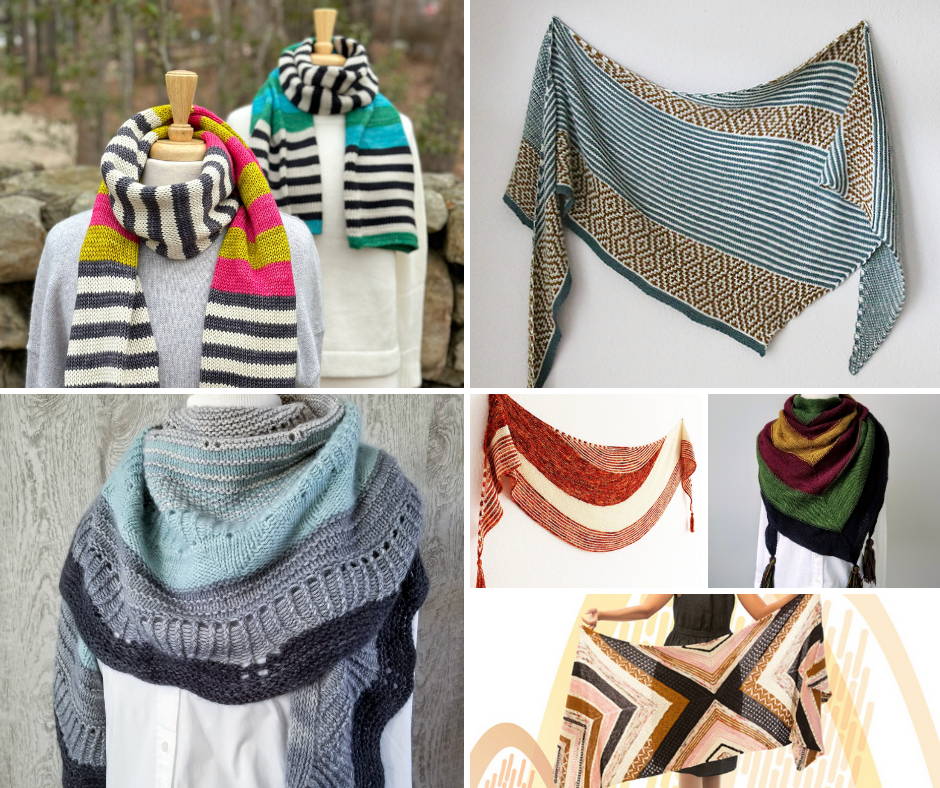
Once the cold weather hits, we find ourselves reaching for all our lovely handmade shawls and scarves to keep us toasty warm against the brisk chill. But in reality, we like to don our hand knits anytime we can! (It gets chilly in the A/C too! 🥶)
Join us in venturing down the rabbit hole of shawl shapes, ways to wear them, and why they definitely have a place in our handmade wardrobe. You can never have enough shawls in our opinion!
Triangle
Triangle shawls are always a winner for either wrapping around your shoulders, or snugging up jauntly around your neck. They can be made in anything from fingering weight up to super bulky yarn, making them a versatile piece anytime of the year. Many triangle shawls are great for beginners, but leave plenty of room for adventure with lace or textured stitches.
There are a few ways they can be constructed too. Some are knit from a garter-tab cast on, increasing as you go, others are knit from end-to-end giving you the ability to create vertical stripes if you like and elongating the triangle shape a bit.
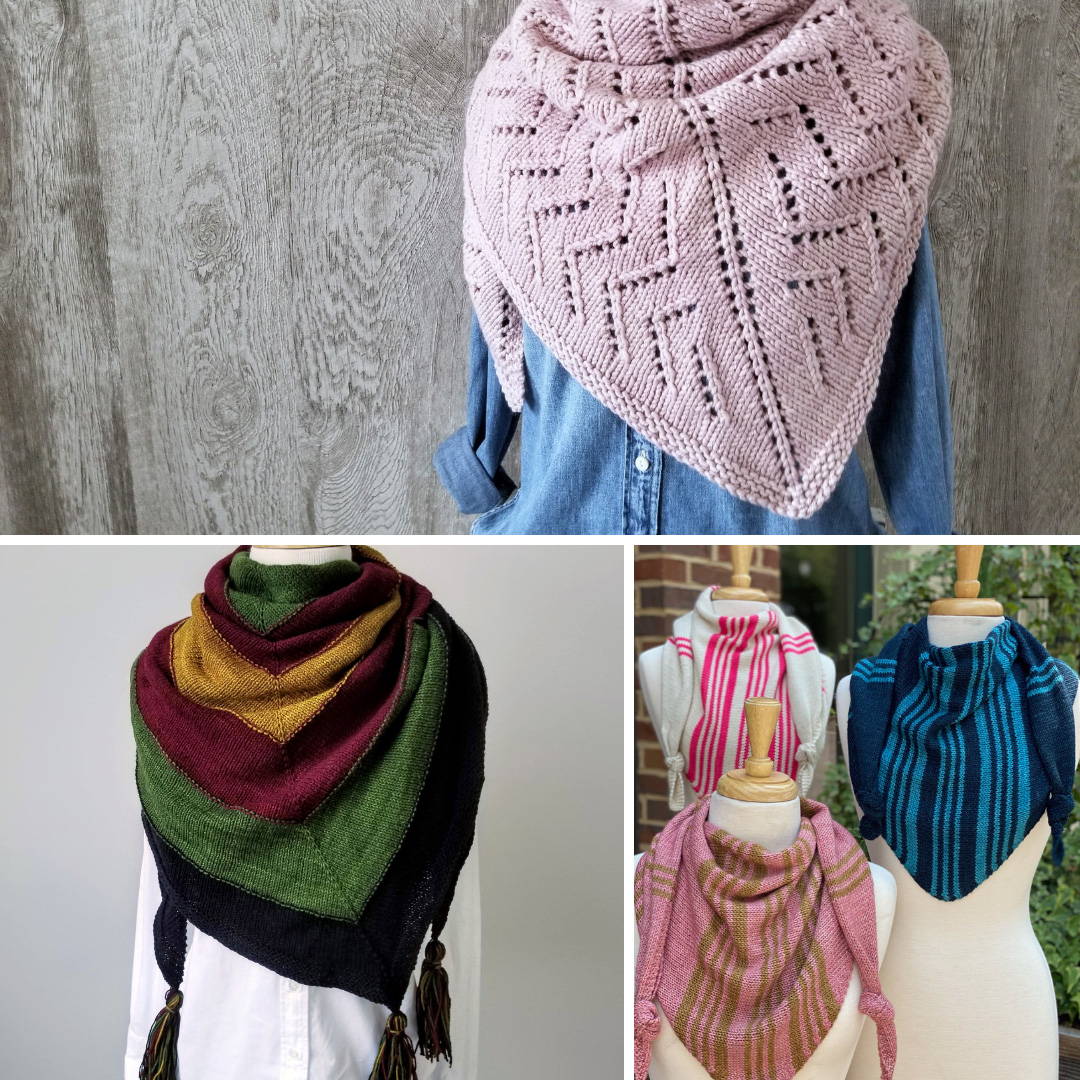
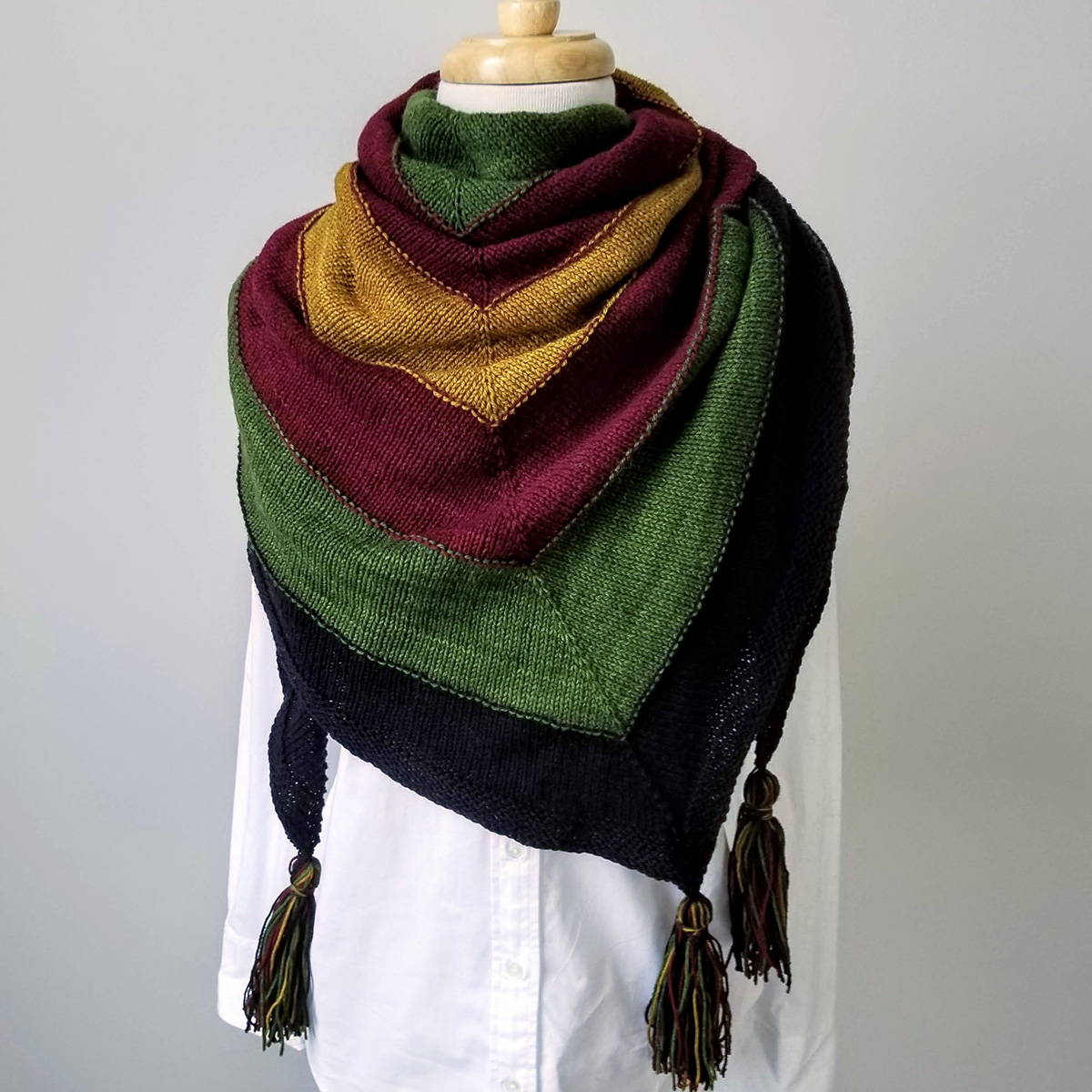
Walk in the Park is a great example of a triangle shawl that is simple, yet elegant and easy to knit.
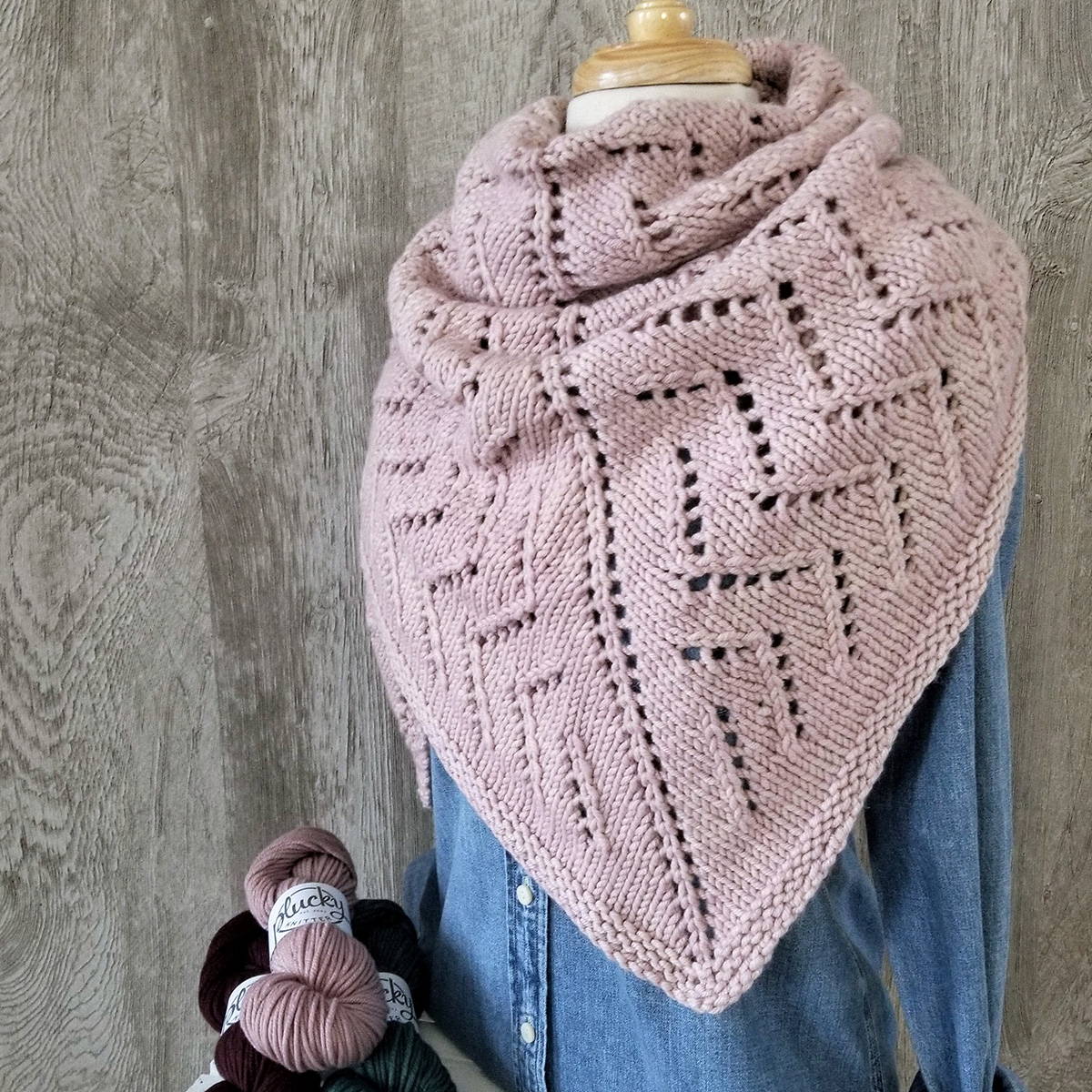
Hinged showcases the fun to be had with Bulky yarn and lace stitches.
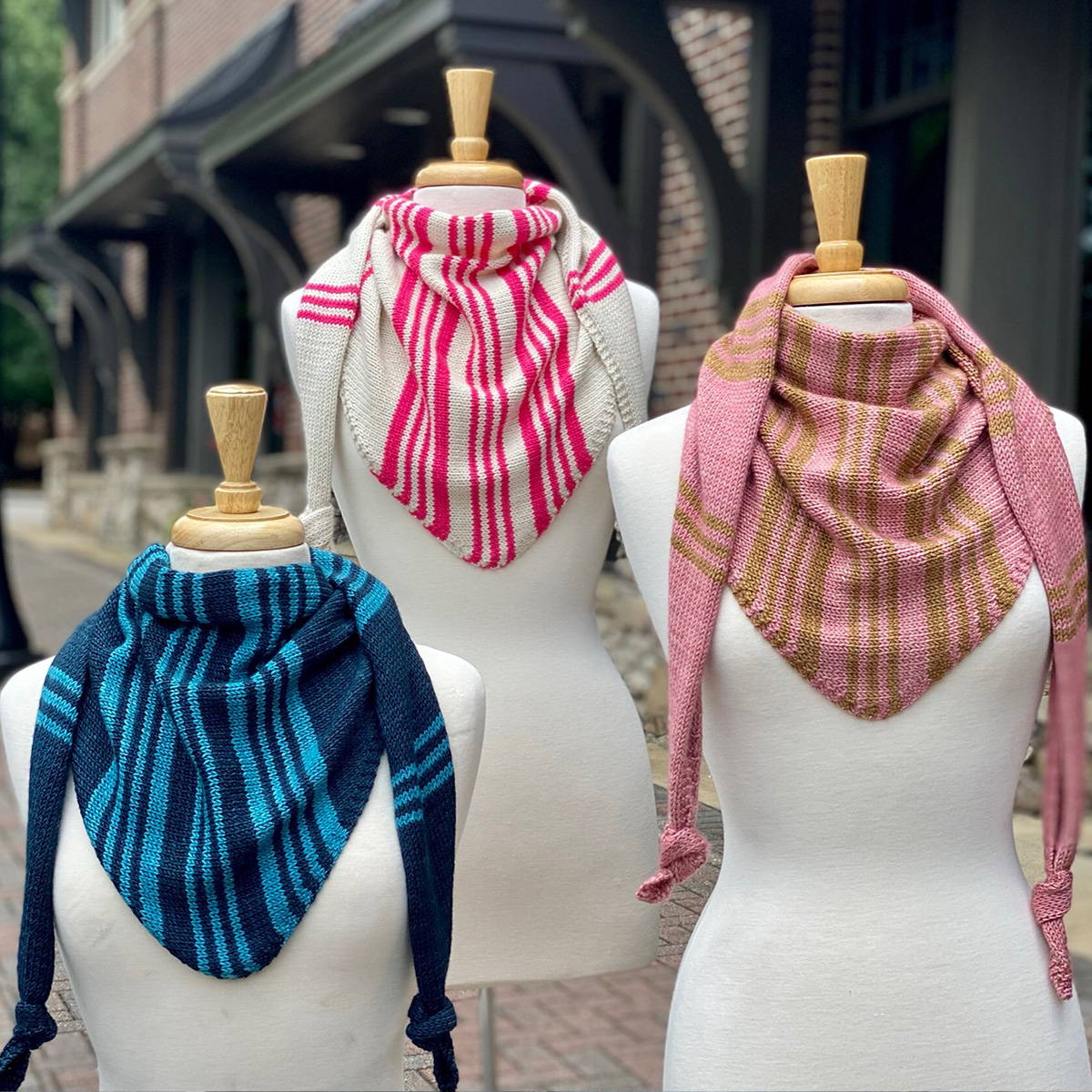
Talk of the Town Wrap is an example of end-to-end construction.
Asymmetrical
Asymmetrical shawls have the advantage of creating wingspan, without the added depth that a proper triangle creates. This allows for the options of wrapping that longer end around your neck a second time for extra warmth and volume or add a knot in that end for a fun styling flair.
Most often you'll find that you only cast on a few starting stitches and work the shawl on the bias, so the row counts never get too out of hand.
Whether you've been on the knitting scene for any length of time, or if you're new to the community, Melanie Berg is a prolific designer of this style of shawl. She incorporates various yarn weights, playing with mosaic or lace stitching, creating truly stunning pieces that you'll be reaching for over and over.
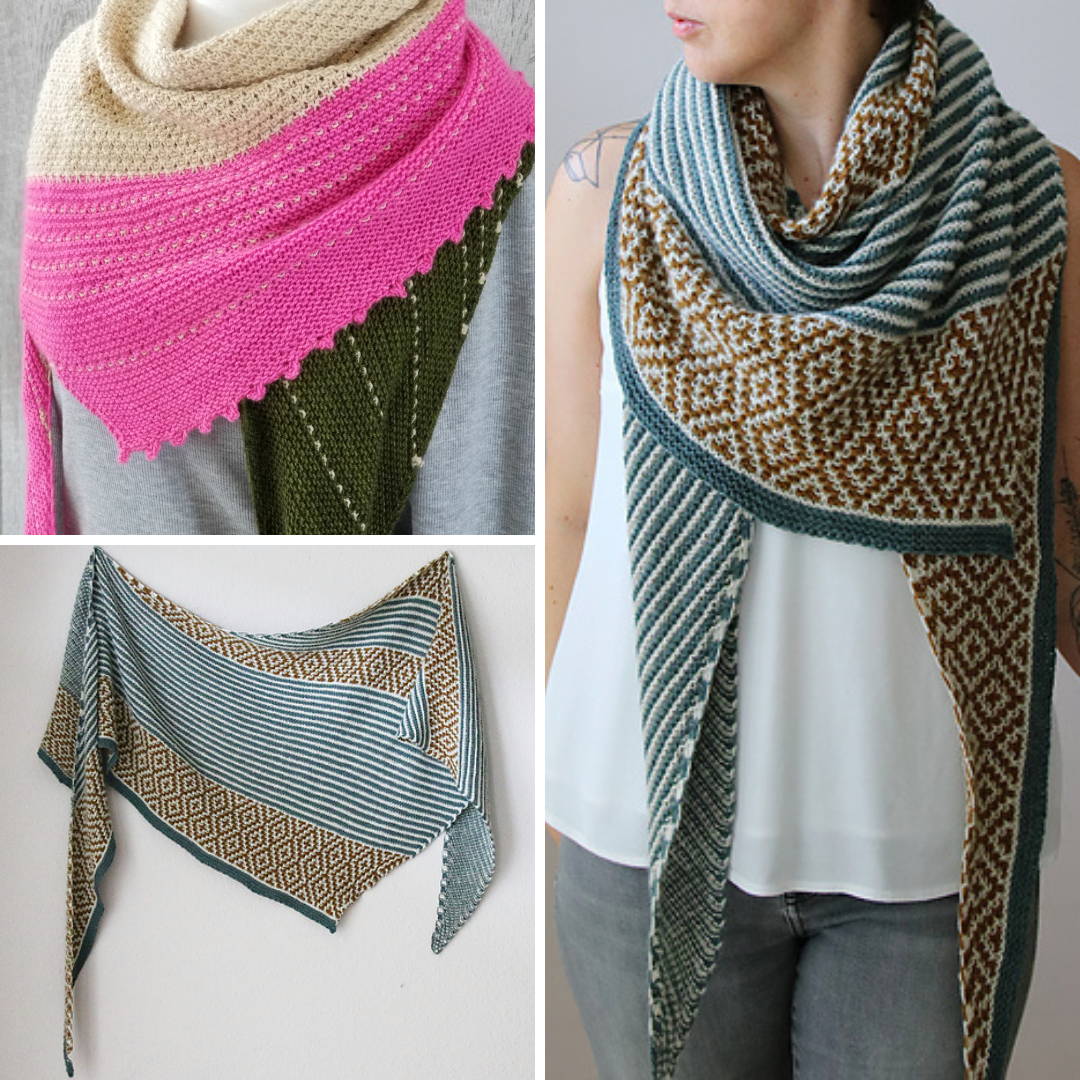

Ashburn by Melanie Berg is a mix of garter and slipped stitch patterns creating a subtle medley of textures, and an endless combination of color choices lets you be as demure or as bold as you like.
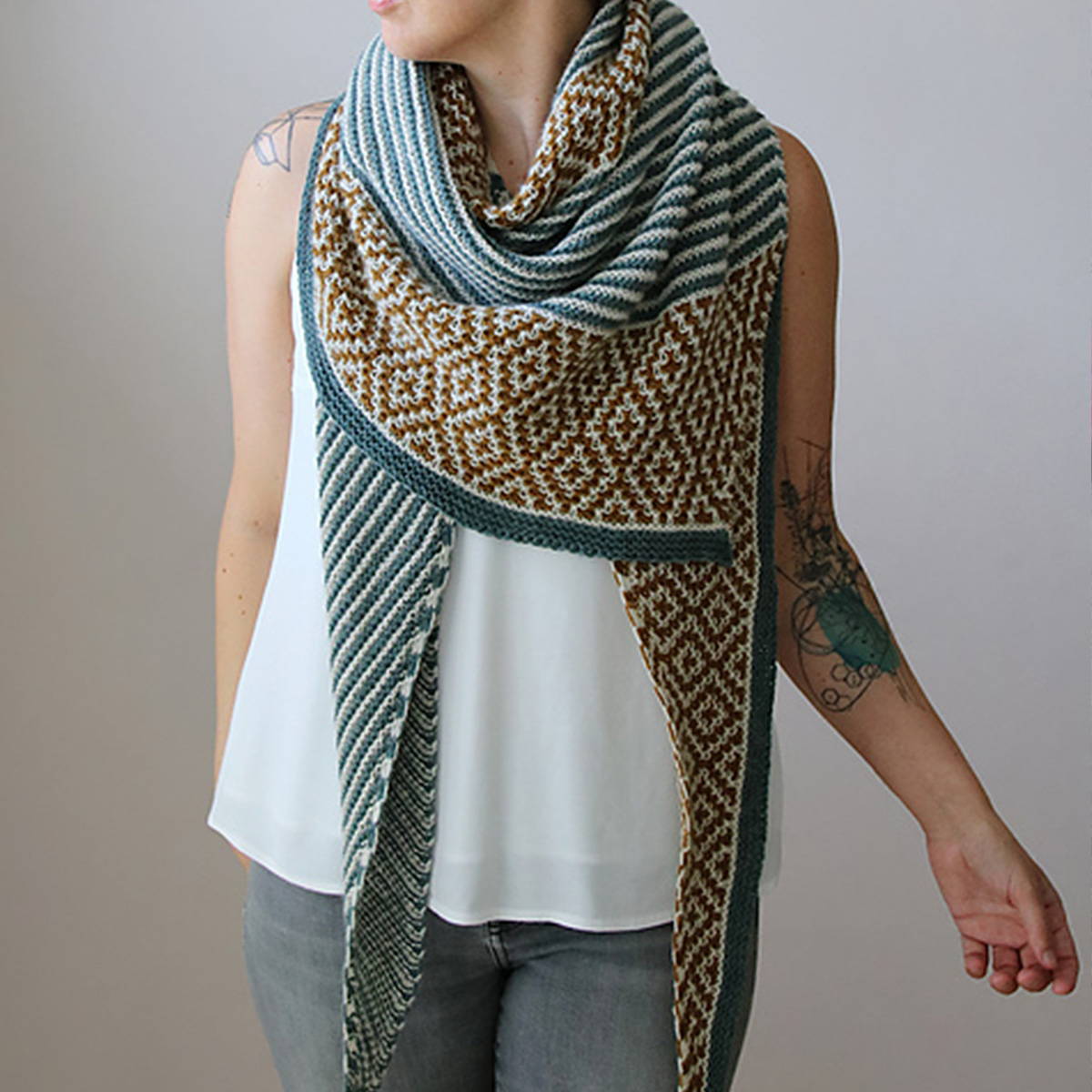
Paperdawn by Melanie Berg is a captivating shawl that beautifully blends softness and substance, inspired by the gentle unfolding of a new day.
Photo © Melanie Berg
Rectangle
Rectangular shawls are a fun play on the traditional scarf, but with a bit more volume, giving the wearer more variety. You can wrap them around like a scarf, or pop your collar and hang it over your coat for a bit of fashion statement.
One other fun thing about this style is how much you can play with the construction. Some designs are straight forward, with a traditional back and forth method, while others are worked on the bias. And more recently, we see designs like Joji's Starting Point or Fading Point that work from the edges in, meeting at a point in the center of the wrap.
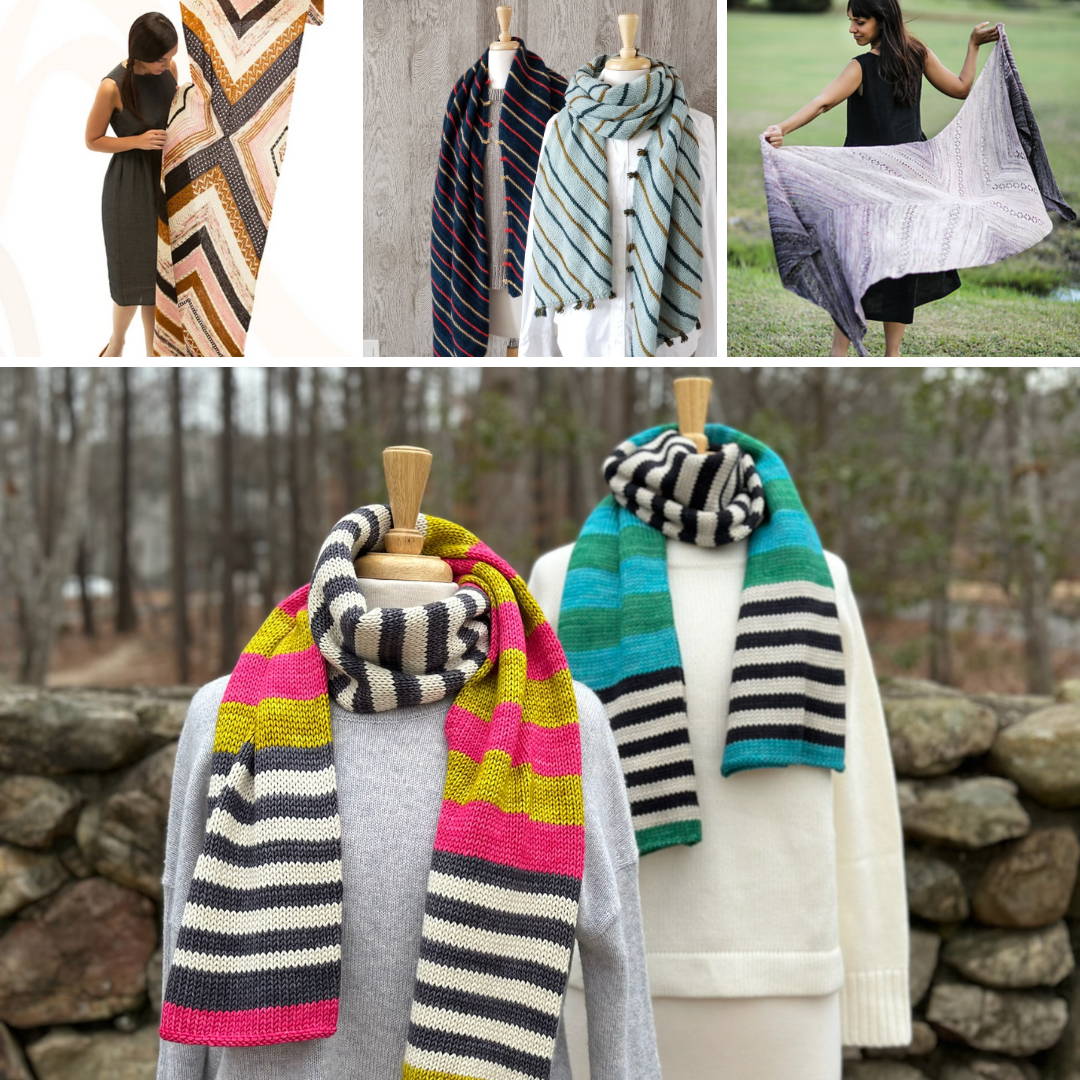
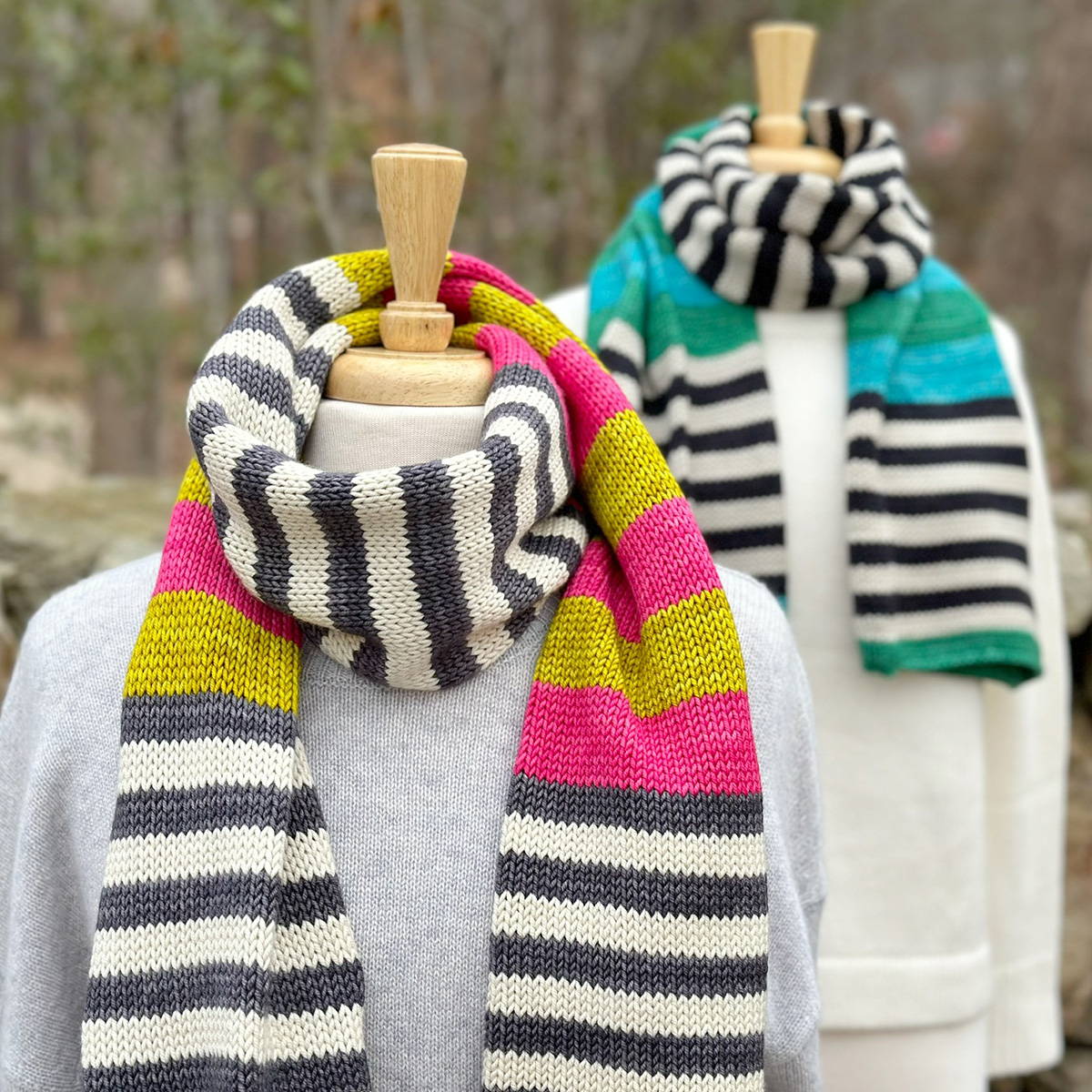
The Essential Stripes Scarf uses four colors, creating a scarf that allows you to customize a look that will never go out of fashion! This design features a classically neutral stripe repeat encasing bold bands of color. Find kits in the shop here!
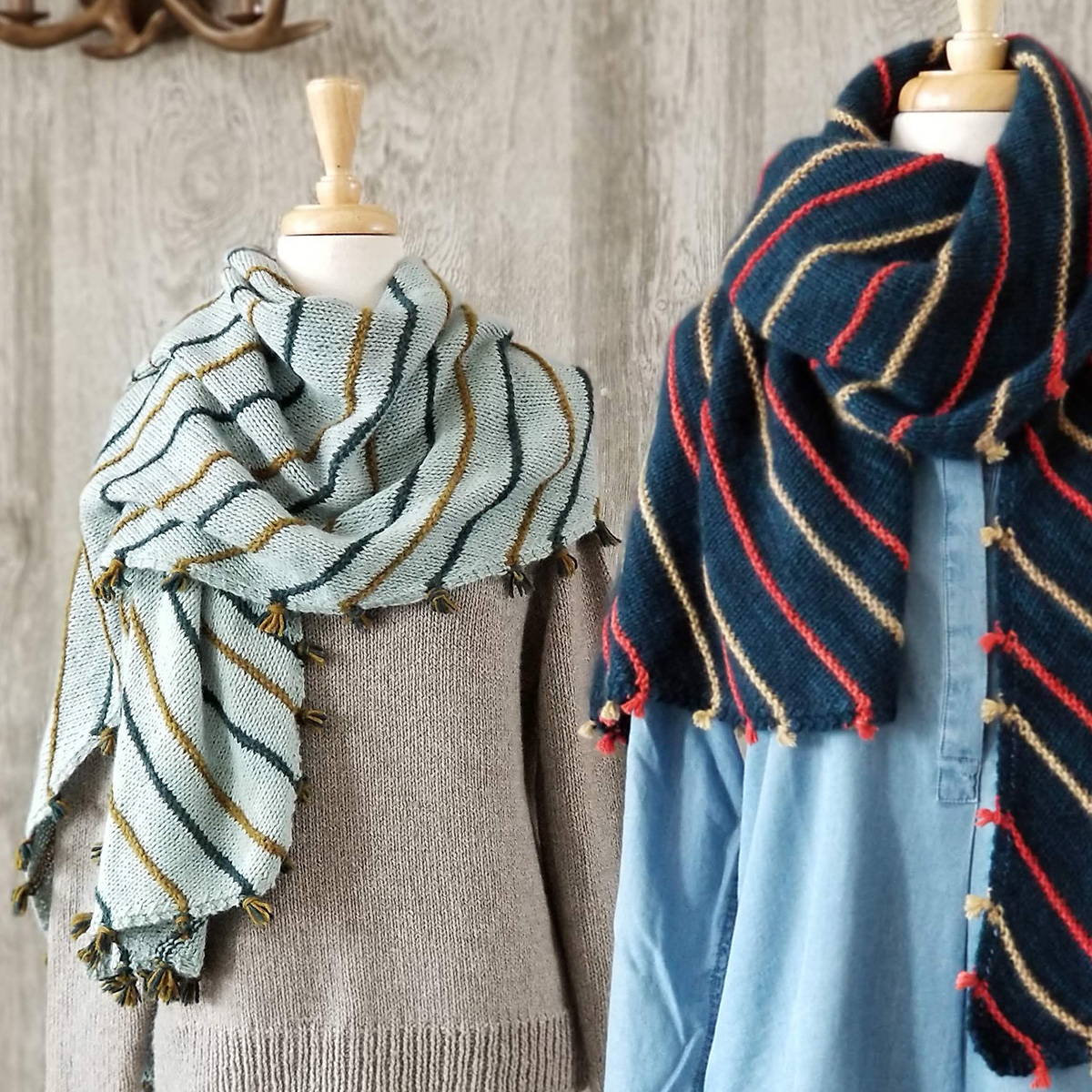
The Tuft Wrap is a great pattern for mindless knitting. Worked on the bias with a lovely balance of stockinette and garter ridge stripes. Then add in the little tufts along the edges to finish off this easy-to-wear accessory.
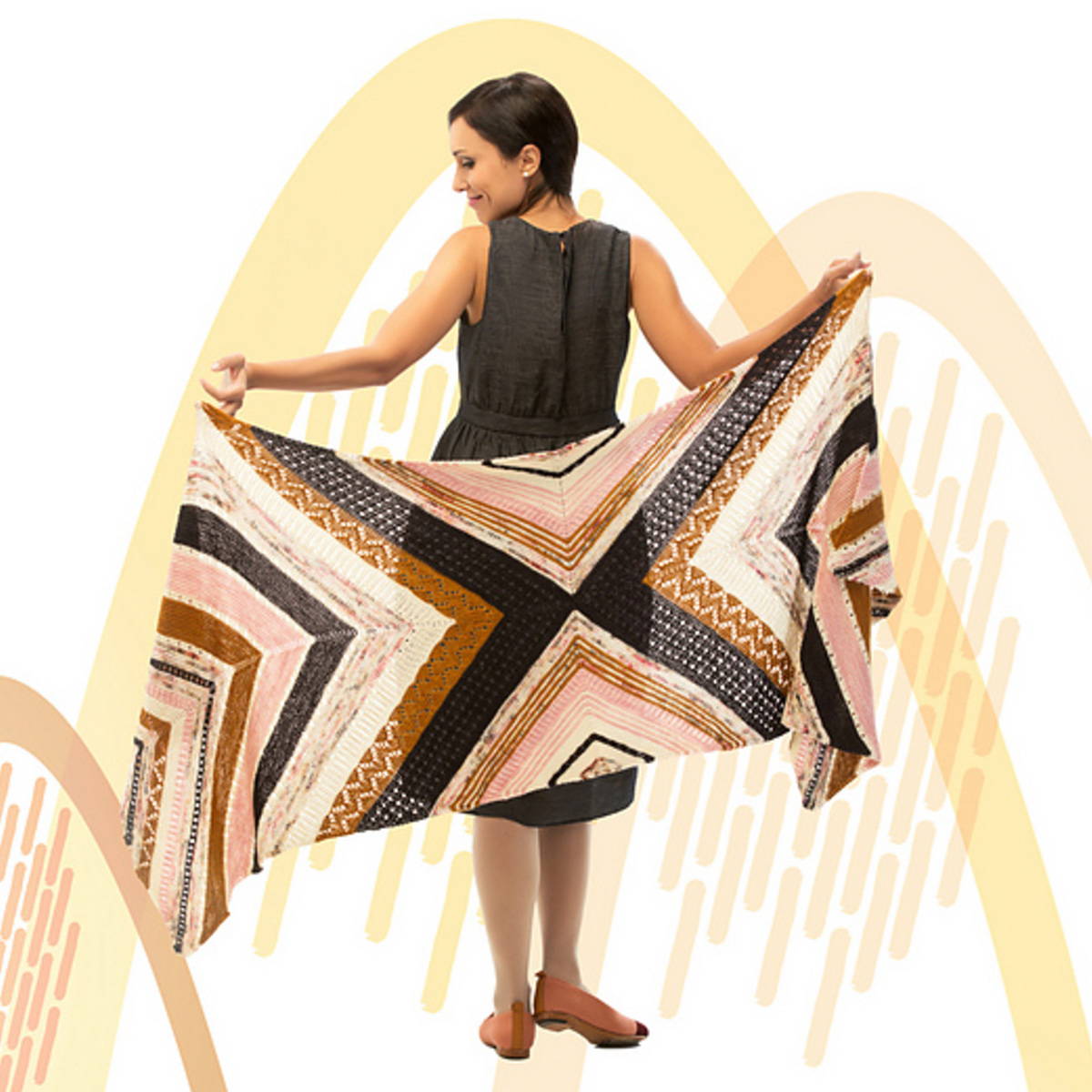
The Starting Point wrap is worked from both ends towards the center with a super fun chevron construction, and joined as you work.
Photo © Joji Locatelli
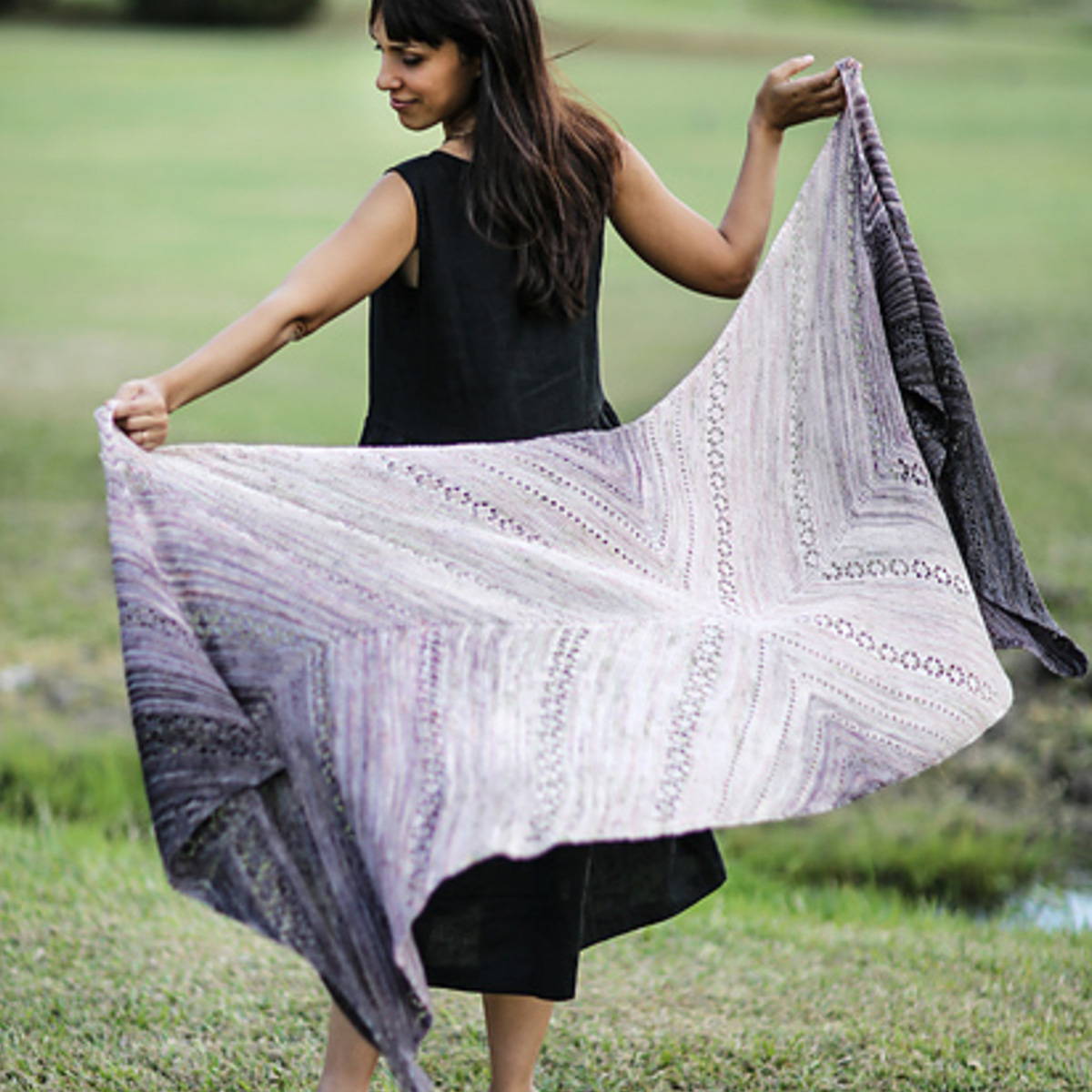
Fading Point is constructed from both ends towards the center, and then both pieces are connected with triangles to achieve a seamless rectangle.
Photo © Joji Locatelli
Crescent
Last but not least, we have the crescent shape. This shape offers soft curves not found in the other shapes. These shawls can be very versatile in styling. They have the length for wrapping around your neck a few times, more like a cowl, or let those tails hang down for a more traditional look.
Most are knit from the top down, increasing in stitches as you knit. Stephen West's Pierre shawl is a great example of the soft lines created with this style, while still allowing you the opportunity to play with textures and color. Another example of the fun that can be had in knitting this style of shawl is the Zorzal by Lisa Hannes. This shawl is worked in a mix of garter stripes and short-row wedges to create a fun interplay of two contrasting colors.

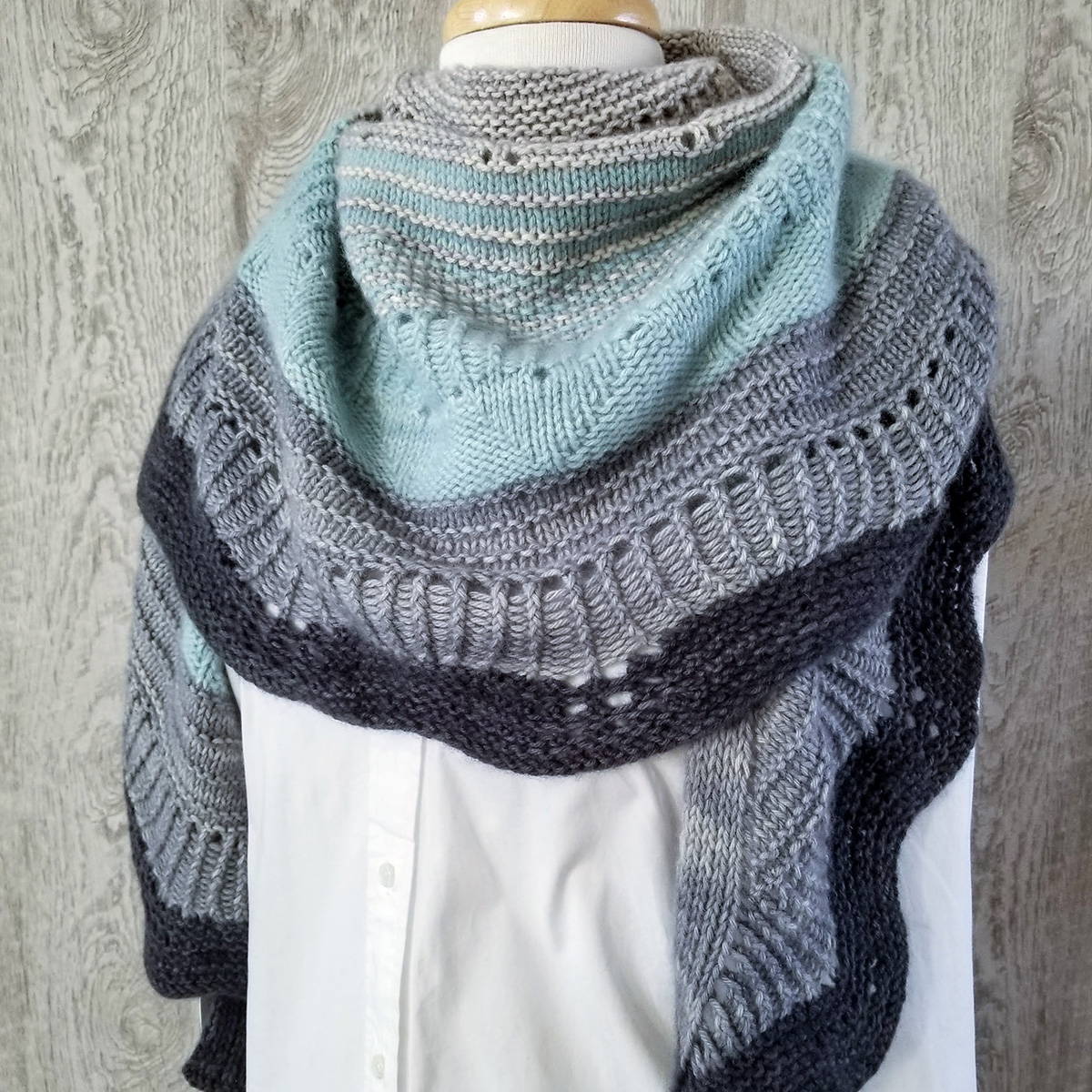
Pierre by Stephen West plays with bands of stripes, twisted ribbing, and textured triangles in this fun-to-knit shawl.

Zorzal by Lisa Hannes is a great two-color option with short-row wedges and garter stripes to create an eye-catching design.
Photo © Lisa Hannes
What is Your Favorite Style?
Do you have a favorite shawl shape, one you knit over and over? Or is there a shape you have yet to try out? Whatever the shape, we are here for all the shawl making!
#neverenoughshawls 😄
We hope our little adventure into the world of shawl shapes has you coming away with some patterns added to your queue, loads of inspiration, and your love of shawls burning bright!
Happy Making Friends!!
The Plucky Crew
P.S. We love seeing all of your beautiful creations made with Plucky yarn! Please tag us @thepluckyknitter or use the hashtag #pluckyknitter on Instagram and Facebook so we don't miss them! And sign up for our newsletter emails for a look at upcoming yarn and kit updates!

